Abstract
The current knowledge of arsenic (As) transformations in the environment, as well as some gaps in this knowledge, are reviewed. These transformations involve As chemical and biochemical transformations in air, waters, sediments, and soils. Arsenic moves in a dispersive manner through air and water and is in physical and chemical equilibrium in many substrates. It is oxidized, reduced, methylated, volatilized, incorporated into biotic tissues, excreted, adsorbed, and desorbed. Oceanic sediments become the eventual sink for As. The rates of As movement and transformation vary with environmental conditions. Besides inorganic As, various methylated arsenicals are found naturally at environmentally sensitive equilibrium concentrations, which are probably maintained biotically. An As-transformation model has been constructed from rate constants derived from field observations. The environmental factors affecting these rate constants are discussed.
Full text
PDF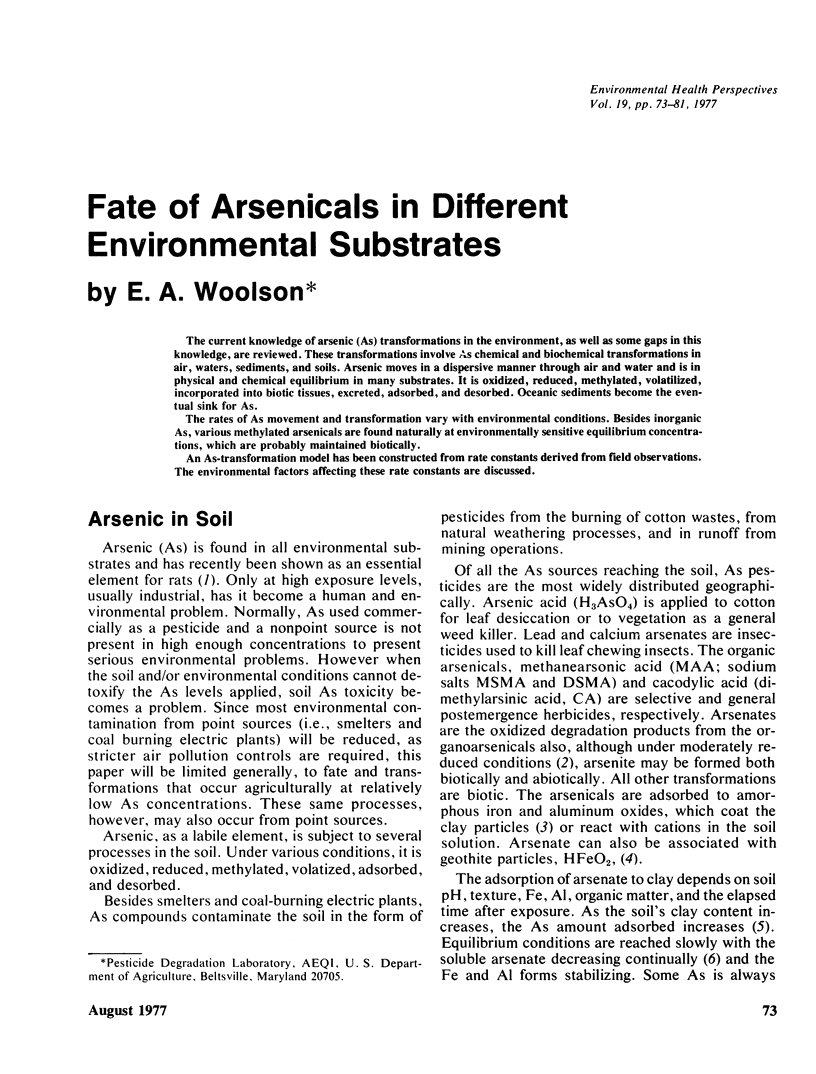
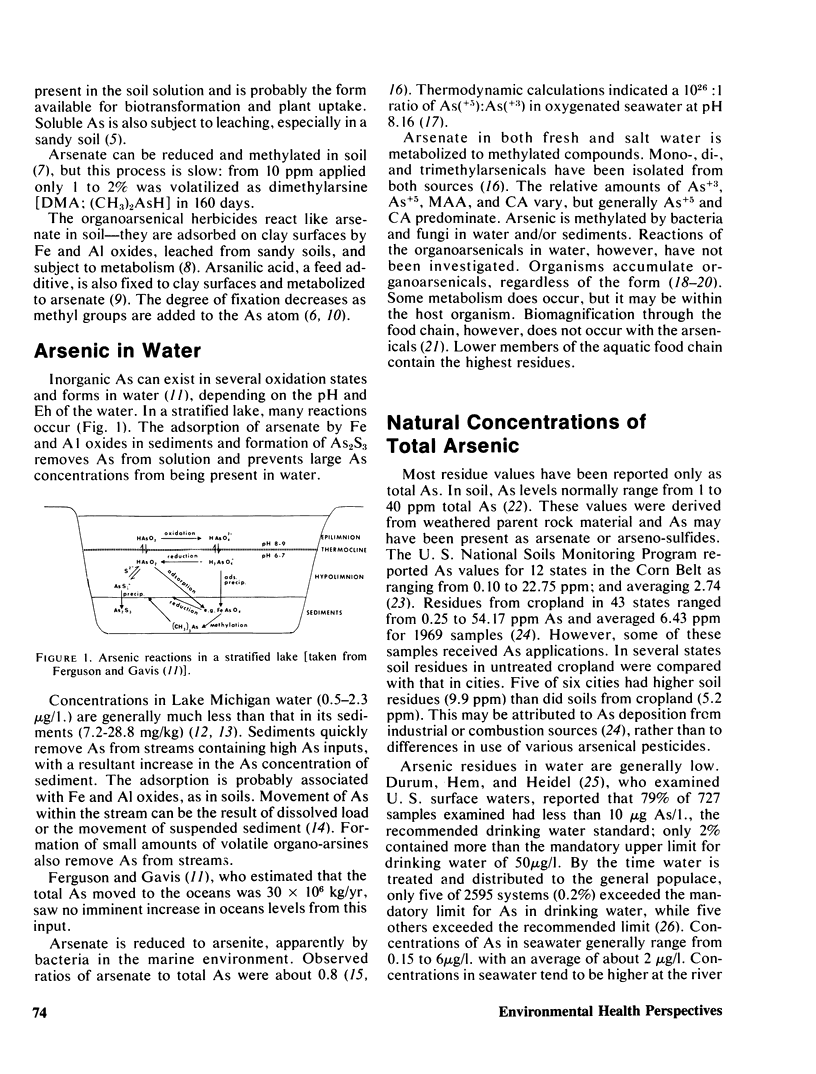
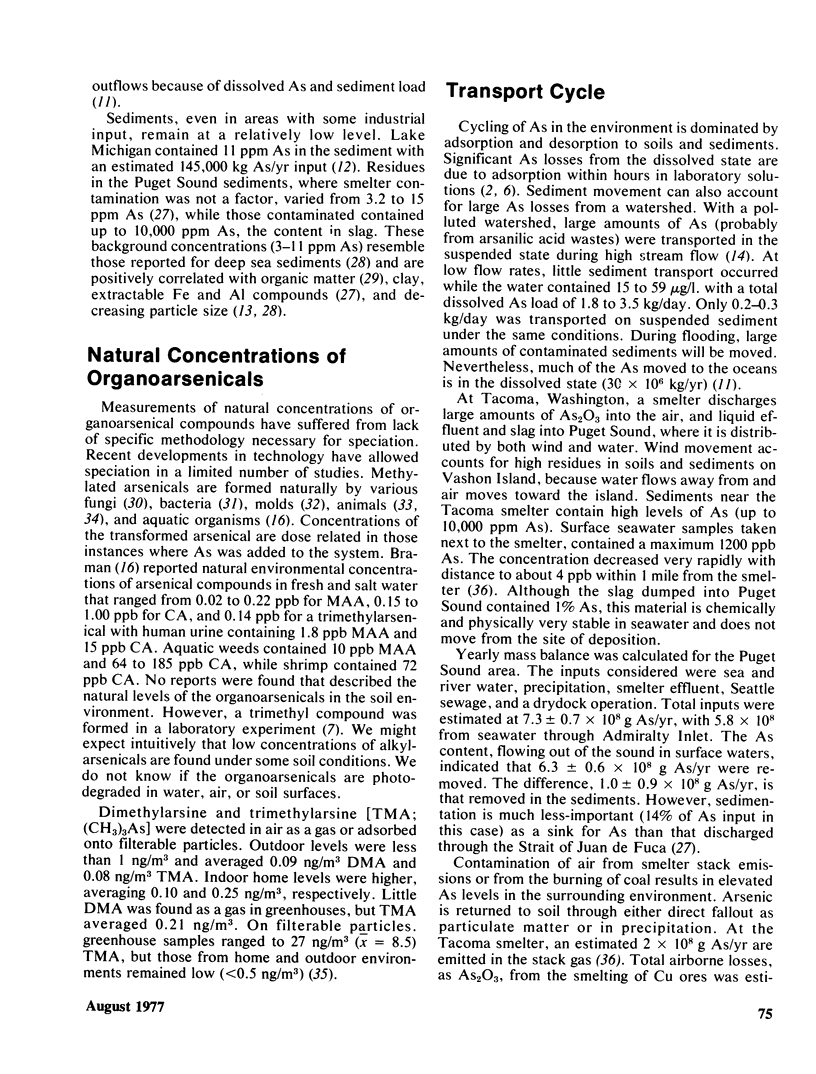
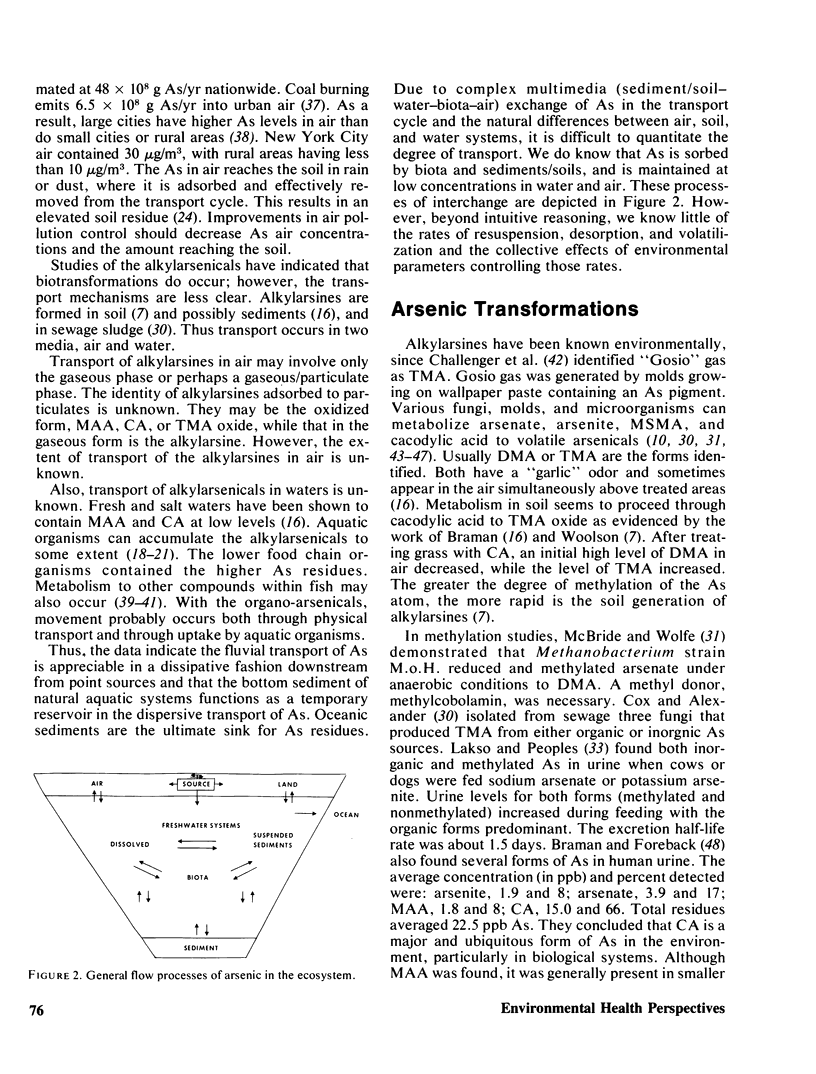

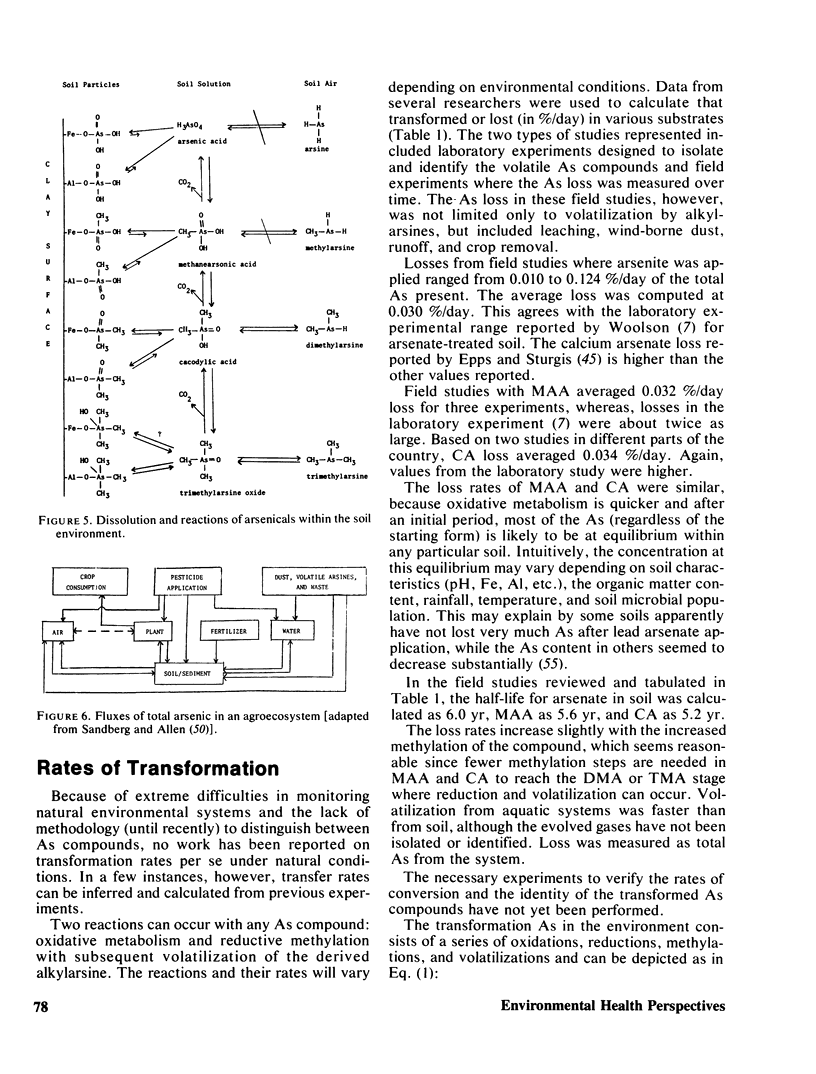



Selected References
These references are in PubMed. This may not be the complete list of references from this article.
- Braman R. S., Foreback C. C. Methylated forms of arsenic in the environment. Science. 1973 Dec 21;182(4118):1247–1249. doi: 10.1126/science.182.4118.1247. [DOI] [PubMed] [Google Scholar]
- Carey A. E., Wiersma G. B., Tai H., Mitchell W. G. Pesticides in soil: organochlorine pesticide residues in soils and crops of the Corn Belt region, United States--1970. Pestic Monit J. 1973 Mar;6(4):369–376. [PubMed] [Google Scholar]
- Cox D. P., Alexander M. Production of trimethylarsine gas from various arsenic compounds by three sewage fungi. Bull Environ Contam Toxicol. 1973 Feb;9(2):84–88. doi: 10.1007/BF01684760. [DOI] [PubMed] [Google Scholar]
- Johnson D. L. Bacterial reduction of arsenate in sea water. Nature. 1972 Nov 3;240(5375):44–45. doi: 10.1038/240044a0. [DOI] [PubMed] [Google Scholar]
- Lunde G. Separation and analysis of organic-bound and inorganic arsenic in marine organisms. J Sci Food Agric. 1973 Sep;24(9):1021–1027. doi: 10.1002/jsfa.2740240904. [DOI] [PubMed] [Google Scholar]
- Lunde G. The synthesis of fat and water soluble arseno organic compounds in marine and limnetic algae. Acta Chem Scand. 1973;27(5):1586–1594. doi: 10.3891/acta.chem.scand.27-1586. [DOI] [PubMed] [Google Scholar]
- McBride B. C., Wolfe R. S. Biosynthesis of dimethylarsine by Methanobacterium. Biochemistry. 1971 Nov;10(23):4312–4317. doi: 10.1021/bi00799a024. [DOI] [PubMed] [Google Scholar]
- Schuth C. K., Isensee A. R., Woolson E. A., Kearney P. C. Distribution of 14C and arsenic derived from (14C)cacodylic acid in an aquatic ecosystem. J Agric Food Chem. 1974 Nov-Dec;22(6):999–1003. doi: 10.1021/jf60196a001. [DOI] [PubMed] [Google Scholar]
- Steevens D. R., Walsh L. M., Kenney D. R. Arsenic residues in soil and potatoes from Wisconsin potato fields--1970. Pestic Monit J. 1972 Sep;6(2):89–90. [PubMed] [Google Scholar]
- Thom C., Raper K. B. THE ARSENIC FUNGI OF GOSIO. Science. 1932 Dec 9;76(1980):548–550. doi: 10.1126/science.76.1980.548. [DOI] [PubMed] [Google Scholar]
- Wiersma G. B., Tai H., Sand P. F. Pesticide residue levels in soils, FY 1969--National Soils Monitoring Program. Pestic Monit J. 1972 Dec;6(3):194–228. [PubMed] [Google Scholar]
- Woolson E. A. The persistence and chemical distribution of arsanilic acid in three soils. J Agric Food Chem. 1975 Jul-Aug;23(4):677–681. doi: 10.1021/jf60200a016. [DOI] [PubMed] [Google Scholar]
- ZUSSMAN R. A., VICHER E. E., LYON I. Arsine production by Trichophyton rubrum. J Bacteriol. 1961 Jan;81:157–157. doi: 10.1128/jb.81.1.157-157.1961. [DOI] [PMC free article] [PubMed] [Google Scholar]


